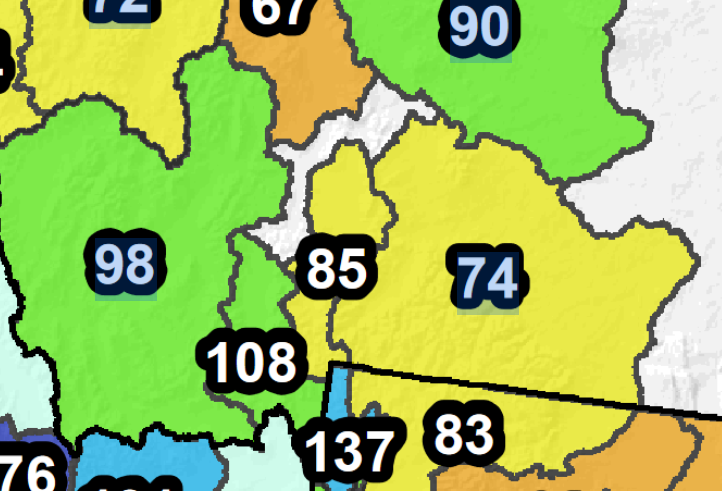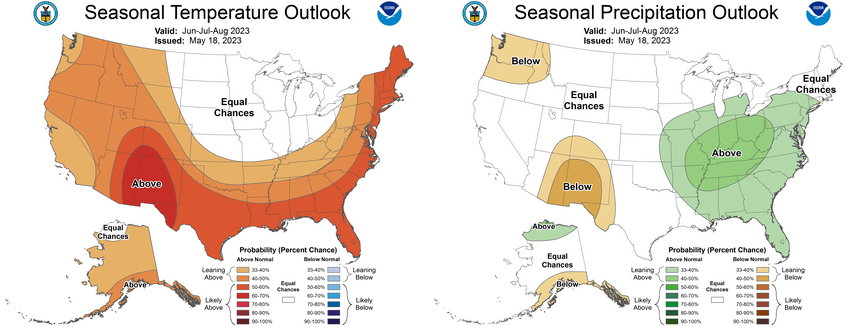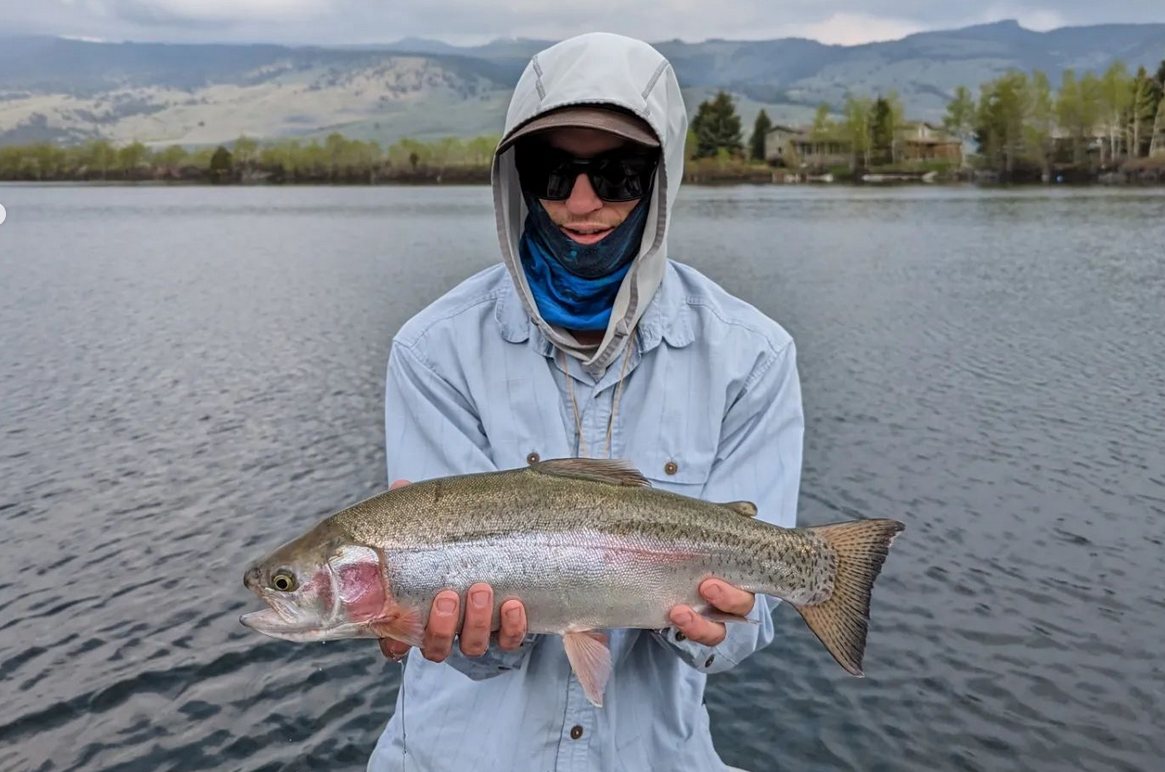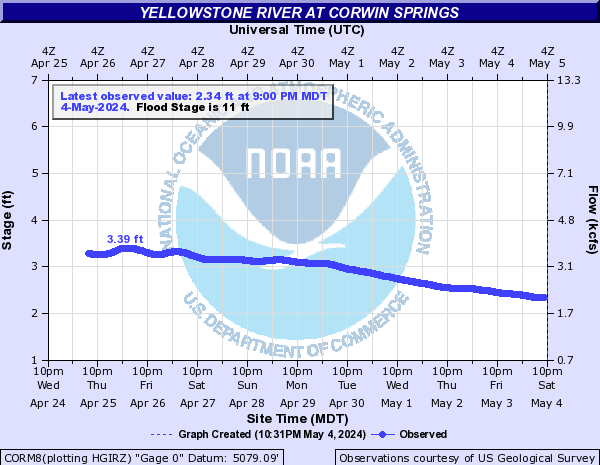Fake Water & Streamflow Forecast
Posted on November 19th, 2023
sdfjh hjksdfjk hsdfjk ‘
skdf lkhsdf hklsdf
sdhf lhsdf hkl
sdfkhlsdfhlkdsf
sdfhlsd
Runoff Update and Season Forecast for May 20, 2023
Posted on May 20th, 2023
Introduction
Winter precipitation and temperatures create a deep snowpack in Yellowstone Country. The amount of snow, how cold and dense it gets (a cold winter = a dense snowpack), and how this snow melts between late March and late June are the primary drivers for our summer streamflows. Only after mid-September does day-to-day weather play a bigger role than the previous winter’s snow. Lots of winter snow, a cold winter, and a late, mellow spring make for a long, gentle release of meltwater through the summer that keeps flows high and cold and trout happy. A warm, dry winter makes for an early melt and great fishing early in the summer, but tough conditions later. A warm winter with lots of late snow makes for intense flooding, but low flows later on, basically the worst of both worlds. That’s what we had last year.
The state of the snowpack, weather outlooks, and (after mid-April) the progress of the spring melt all factor into trip planning, since they govern when the spring runoff will begin and end, how high flows will remain through the summer, the potential for high water temperatures and associated closures, etc.
We are now in the middle of the spring melt everywhere. It started quite early this year and there’s no sign of any sort of “runoff break” of cold weather for the foreseeable future. Runoff is therefore early and hard. This will have big repercussions for later in the season, chiefly a much earlier end to runoff than we anticipated and lower water in late summer.
Winter Weather Summary and Current Conditions
After a generally warm and dry fall, winter struck with a vengeance in Yellowstone Country. Early snowfall through about December 20 was exceptionally strong. Then things died down a bit until mid-January. Mid-January through mid-April was extremely cold and wet. After that, the switch flipped and the last few days of April and almost all of May have been much warmer than normal, with what seems like near-normal precip.
All that being said, the intense moisture that has bombarded California and Utah has generally skirted just to the south of our region. The Madison–Gallatin basin inside YNP is the main exception. This area got pretty pasted with snow.
This cold and normal to slightly wet winter we had is a welcome reprieve from the past several years of below-normal snowfall that either didn’t recover until late in the season (2018-2019 and 2021-2022) or never recovered (2021, especially). After peaking at 110% to 139% of normal for the date, and slightly above normal in terms of the peak amount of snow and snow-water-equivalent on the ground, the melt has come on very fast and early. Remaining snowpack is now sitting at between 74% of normal and 137% of normal for the date. That said, a lot of this snow is getting into the ground, so those lower numbers are nowhere near as big a problem as they would be if we had seen peak snowpack that low.

Medium-Term Weather Forecast
It doesn’t look like we’ve got much of a break coming as far as warm temperatures, so runoff is likely to continue at faster-than-normal levels. Bummer.

Long-Range Weather Outlooks
Long-range outlooks are calling for hotter than normal and probably drier than normal weather through the summer (really all the way until midwinter). It’s a good thing we had good snowfall over the winter to recharge the groundwater. Without it, we might well be looking at problems for streamflow.
If you’d like to watch the NOAA outlooks for yourself, they’re found at this link.

Predictions for Summer Fishing Conditions
General Comments
Overall, we expect a slightly early start to the prime summer fishing and slightly below normal flows coupled with higher than normal water temperatures. Everything WILL happen earlier than it did in 2022, when we got our cold weather and moisture from April through mid-June rather than during the winter. This year it’s the complete opposite.
Conditions look to resemble 2020 the most out of recent seasons. Going further back, 2016 and 2012 might also be good analogues. We will have much better conditions than we did in 2021, the most recent drought year, and will not see the flooding followed (paradoxically) by great conditions as we did in 2022.
The most consistent fishing is now likely to take place from around July 7 through July. August may see challenging conditions depending on how hot it is. We do not anticipate widespread 2:00 fishing closures on any waters where such closures are unusual. They’re basically certain on rivers where they’re common, such as the Lower Madison and Jefferson (where nobody fishes in midsummer anyway). Short-term 2:00 closures are possible on some other low-elevation waters like the Yellowstone east of Livingston. It depends on how long the summer heat lasts without breaks. 95 degrees is fine for a couple days at a time. When it lasts for weeks, that’s a problem.
Detailed Predictions for Specific Fisheries – Montana
- Madison River – Lower: The Lower Madison is high but fishing okay. It’s the only float river in the region that’s fishable right now. I’ve got multiple trips there over the next couple weeks and it will remain the best public water option within 2hr of Livingston through June 10 and the best within 90 minutes until more like June 20.
- Madison River – Upper: The Upper Madison is pretty marginal right now. It will likely come into play about June 15 within 3hr of Livingston.
- Boulder River: Even the Boulder blew out quickly. It will come back into shape around June 20-25, probably the earlier end of that range.
- Gallatin River: The Gallatin will come in around June 25, particularly upstream from the Taylor Fork.
- Stillwater River: The middle Stillwater upstream from the Rosebud confluence should drop into shape around June 25, while the area below the Rosebud will still be too high for at least ten days thereafter and will be best after July 20. We did much better above the Rosebud last year; further down suffered a lot from the floods. As such, we expect to stick to the middle river until at least early August, since our ultralight raft will allow us to stay on this stretch after it gets too low for full-size rafts. The lower river will probably fish better the lower it gets. We intend to explore it very late in the season this year with the ultralight, looking for run-up browns.
- Yellowstone River – Paradise Valley and Near Gardiner: The Yellowstone entered runoff around May 1, more than two weeks earlier than last year. It will probably begin dropping out of runoff between June 20 and June 25. As long as it clears normally, as opposed to very late like last year, the Salmonfly Hatch will occur as the river is coming out of runoff and will be fishable. The best fishing will take place in the latter three weeks of July. After that, high sun and high temps might make things tough in late afternoon, though I think we have enough snowpack remaining to avoid any 2:00 mandatory closures unless we have a weeks-long 100-degree heat wave as in 2021.
- Yellowstone River – Yankee Jim Canyon and East of Livingston: Due to heavy currents and lots of hazards, Yankee Jim Canyon and the area from Pine Creek near Livingston down to Laurel near Billings needs to drop more than other areas before we like fishing/guiding on it. Post-runoff, we expect these areas to drop below the 6000cfs level we like to see around July 15. The best fishing east of Livingston will be for the month thereafter. Yankee Jim will be best from early August through early October. Pine Creek to Hwy 89 (right through Livingston) is usually best in August and September.
- Area Small Streams: Except for a few meadow-type odds and ends like the East Gallatin, most area small streams outside the park are steep, fast, and rocky. As such they’ll be too high to fish easily or well until late July. They’ll fish best in the afternoons from then until early September.
- Private Lakes: The private lakes are fishing well already. We ran our first trip on one May 4 and have more scheduled through June. Sitz, Merrell, and Story will probably all get too warm by June 20 unless the weather cools off. Good thing that last trip in June is on Burns, which is always fine that late.
- Area Reservoirs: All reservoirs that aren’t in the high mountains are now accessible and should be fishing well.
Detailed Predictions for Specific Fisheries – Yellowstone Park
The Yellowstone Park season runs from May 27 through October 31 this year, though as always many areas open later (check regulations) or are simply too high and muddy well into the summer. This should be a good year for park waters, especially since large portions of the park were inaccessible and received no fishing pressure at all last season. That’s got to be a welcome break for the poor fish in Soda Butte Creek. There will be big changes to the stream bottoms, structure, and even the courses of the streams on the Gardner, Soda Butte Creek, Slough Creek, and the Lamar River, but these waters all produced well in very limited samples at the end of the season last year.
The replacement North Entrance Road was finished in late October last year. There’s still likely to be some ongoing traffic control as this ad-hoc road is built up to code, but full access to Yellowstone Park is available via both Gardiner and Cooke City.
- Firehole River: The Firehole is going to benefit from heavy snowpack in the basin, but maybe not right away. We don’t know if the Firehole will be fishable on the opener. My gut tells me that it should be fishing, but maybe only subsurface. While snowpack in the Madison-Gallatin Basin in YNP is still over 130% of normal, I suspect most of this is in the high elevations feeding the Gallatin rather than the lower mountains feeding the Firehole. I suspect the best fishing will occur in the second and third weeks of June this year, followed by a rapid descent into the summer high water temperature doldrums.
- Madison River in YNP: Similar story as the Firehole, but even more likely to be too high, fast, and dirty early on. I really doubt the Madison in YNP will be worth anything until the second week of June. That said, the first two weeks of clear water following cold, wet winters can turn out a lot of good browns and rainbows that ran up to spawn last fall and haven’t gone back to Hebgen Lake yet. The Madison will fish best in the latter half of June and again (as always) in September and October.
- Gibbon River: Almost certain to be too high and murky the first week of the park season. Once it becomes fishable, the stretch downstream of Norris Geyser Basin will fish best from June 5–10 through June, with June 15 about tops. The stretch above Norris is now home to solid numbers of spooky westslope cutthroat and grayling that can get surprisingly large for such a small creek. This reach will come into shape in late June and fish best in July and August, as long as the mosquitoes don’t carry you away.
- Park Lakes: Lakes in the park will ice-out over the first week of the season, except for a few small ponds like Joffe that will be ice-free right out of the gate. The difficulty in the first half of June will be accessing the lakes: lots of mud and waterlogged trails. Hiking into Grebe or Cascade Lake around June 10 may be an “in waders” affair. Most lakes will fish best from June 10 or 15 for a month thereafter. REMINDER Blacktail Ponds do not open until early July to protect rare ground-nesting birds.
- Gardner River: The Gardner downstream of Boiling River can be fishable right from the start of the season during cold snaps. That said, this water changed hugely in the 2022 flood and may not be very good for several years. Access is also a question mark, as it is no longer near the road and there are no official hiking trails (yet). Upstream from Boiling River and especially upstream from Lava Creek did not suffer from the floods. This water will come into shape the last week of June or first week of July and fish best for numbers prior to mid-August. Thereafter, good fishing depends on fall brown trout runs from the Yellowstone. All of the runner holes between Lava Creek and Boiling River disappeared during the flood, so we don’t know what to expect for this fishing in 2023.
- Gallatin River: The park stretch of the Gallatin has a very deep snowpack, so it’s not likely to clear before June 25 and might be ice water for another ten days thereafter. It will fish best from July 10 through mid-August.
- Yellowstone River – Grand Canyon: the Grand Canyon did not suffer from the floods and is fully accessible for the first time in several years now that the Tower Falls Trail rehab project is complete. This water will probably come into play between June 20 and June 25 and be excellent all summer no matter how hot air temps get.
- Yellowstone River – Upper: The Yellowstone above Chittenden Bridge opened July 1 last year for some inexplicable reason. We don’t like this change from the historic July 15, since the cutthroats are still spawning here in early July. We therefore suggest holding off until July 15. The fishing will be best for the month thereafter.
- Yellowstone River – Black Canyon: the Black Canyon of the Yellowstone tracks similarly to the “Paradise Valley and Near Gardiner” section. It should come in around June 25. The Salmonflies move upstream as the water warms, so the second and occasionally even the third week of July see it peak on this reach, with upstream areas near the Lamar peaking last. The best fishing will occur from July 10 through late August and then tail off through September.
- Slough Creek: Runoff will end around July 4. The best fishing will be for the month thereafter. Fish in the First through Third Meadows got a real break last year, so they should be almost dumb for a week or two once the water clears.
- Soda Butte Creek: Huge changes to Soda Butte’s course due to the floods make it something of a question mark in 2023. On the one hand the fish got a break for a season. There was literally no access to Soda Butte last year. On the other hand, lots of fish and bugs certainly died during the flood. Soda Butte should drop in between July 4 and July 10, with the best fishing from July 15 through August 25.
- Lamar River: Similar to Soda Butte, though it suffered comparatively less. It fished well for the time of year in very limited action in October last year, once some access was restored.
- Small Streams: Meadow-type creeks draining lakes should come in around June 15, while faster mountain-type creeks will come in early in July. The meadow creeks will fish best in early July. The mountain creeks will fish best in early August. All will fall off between mid-August and about September 10 depending on elevation, as the nights get cold.
Conclusion
We haven’t done a 180 from where we were at the beginning of the month (or especially in the dead of winter), but we have swerved a bit. Instead of a bit of a late start and our preferred slightly above normal flows, we now expect a slightly early start and slightly below normal flows. On the other hand, spring fishing has been very good in the right places already, as the photo below (from a private lake, photo taken the 18th) attests.
This will be our last update of the spring. Look for shorter and more regular updates about the end of runoff and how things are shaping up beginning shortly after Memorial Day.

Season Forecast & Runoff Update for May 3, 2023
Posted on May 4th, 2023
Just a quick update as I’m busy with trips (heading up to the MO for a few days, since we’re muddy near Livingston) and NOAA has not updated snowpack totals lately.
Spring (summer?) hit with a bang this past week. We had not had more than 1-2 days over 70 degrees all spring, and most were in the 40s-50s. That changed a week ago. We have been in the 70s and maybe pushing 80 today. This has pushed all area waters into runoff. Even the Lower Madison is “meh.” Very slow fishing the past few days, anyway, with murky water, no risers, and some detritus in the river.
This MAY push likely summer “fishable dates” a week earlier, though there is still A LOT of low snow. As of yesterday (May 2), there was still snow cornices on NE-facing hilltops adjacent to the highway in Livingston, at less than 4600 feet above sea level. High-elevation snowpack has barely budged yet. Moreover, we’re looking at a cool spell next week. Temps in Livingston are supposed to drop from this week’s absurd highs (windows in the house open all night) to highs in the 50s by Saturday.
The cool spell is going to mean money fishing on the Yellowstone and probably the Boulder and Stillwater Rivers, with Mother’s Day Caddis out and about, probably from Weds next week through at least the following Sunday (the Sunday in question being Mother’s Day). Flows are forecast to drop from 6000+ cubic feet per second to a bit over 3000. BIG improvement, and almost certain to fish well. Even if there aren’t any caddis, these runoff breaks almost always turn out lots of big fish on streamers.
Long story short: runoff now, a break in a week, and maybe a SLIGHTLY earlier end to the runoff in late June and early July, compared to our most recent report.
Missouri River fishing report this weekend!

Predicted Yellowstone River flows for the next ten days. That “flatline” is going to be a sweet spot for great fishing before the next peak of runoff hits following the next warmup.